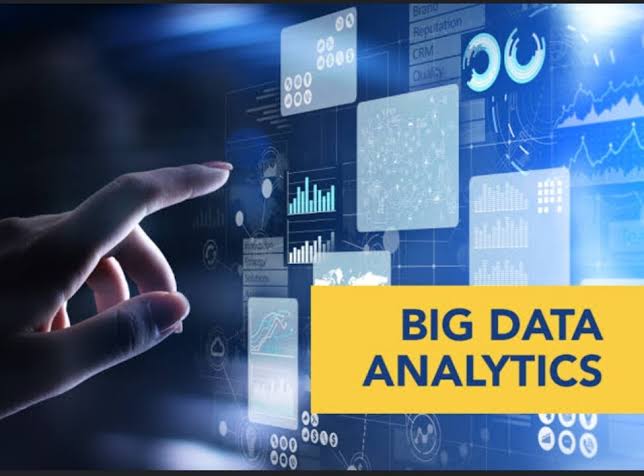In the digital era, the volume, velocity, and variety of data have reached levels previously unimaginable. As of July 2025, big data has become an indispensable resource in shaping how organizations, institutions, and even governments make decisions. Big data refers to vast datasets that are too complex to be processed by traditional data-processing software, but when properly harnessed, these datasets provide valuable insights that inform strategic actions.
The role of big data in decision making has expanded from a supportive tool to a central pillar in virtually every sector. Whether it’s predicting customer behavior, managing healthcare outcomes, or navigating public policy, decisions driven by data are proving more accurate, timely, and efficient.
Understanding the Core Elements of Big Data
Big data is often characterized by five Vs: Volume, Velocity, Variety, Veracity, and Value. Each plays a critical role in how data is collected, processed, and analyzed.
Volume refers to the sheer amount of data generated daily—from social media posts to transaction logs. Velocity speaks to the speed at which data is generated and must be handled. Variety includes the different types of data, such as structured databases, unstructured text, videos, and sensor readings. Veracity deals with the quality and trustworthiness of data, while Value emphasizes the insights and utility extracted from that data.
Together, these dimensions shape how organizations manage their data ecosystem and influence the quality of decision-making.
Enhancing Strategic Decision Making
One of the most transformative aspects of big data is its ability to inform long-term strategy. Executives and decision-makers no longer have to rely solely on intuition or outdated reports. They can now access real-time data dashboards, predictive analytics, and scenario simulations.
For instance, retail companies use purchase histories, customer feedback, and social trends to predict demand and fine-tune inventory. Financial firms apply big data models to assess investment risks, while public health officials rely on vast health data to allocate resources and prepare for disease outbreaks.
By basing decisions on comprehensive and timely information, organizations reduce uncertainty and make more confident strategic moves.
Operational Efficiency and Cost Reduction
Big data also plays a crucial role in improving internal operations. By analyzing workflows, system logs, and supply chain data, businesses can identify bottlenecks, inefficiencies, and redundancies.
Manufacturing companies, for example, use real-time data to monitor equipment and predict maintenance needs, thereby avoiding costly downtime. In logistics, route optimization algorithms analyze traffic, fuel usage, and delivery times to enhance efficiency.
These data-driven operational decisions help organizations cut costs while maintaining or improving service quality—a major competitive advantage in today’s fast-paced business environment.
Personalization and Customer Insights
Another area where big data revolutionizes decision making is in customer experience and personalization. Companies now gather detailed information about consumer preferences, behaviors, and interactions across multiple platforms.
This data is used to personalize product recommendations, target marketing campaigns, and even shape product development. Streaming platforms suggest movies based on viewing history, while e-commerce websites customize homepages based on browsing behavior.
Such personalization not only improves customer satisfaction but also boosts engagement and loyalty, giving companies an edge in increasingly saturated markets.
Predictive and Prescriptive Analytics
Big data doesn’t just tell organizations what’s happening—it helps predict what might happen next. Predictive analytics uses historical data to forecast future trends, behaviors, or events. Prescriptive analytics goes one step further, offering recommendations on the best course of action.
For example, airlines use predictive models to anticipate flight delays and adjust schedules. Online platforms use prescriptive models to determine pricing in real time, based on demand and competitor activity. These analytics tools empower organizations to stay ahead of problems and act proactively rather than reactively.
Risk Management and Fraud Detection
In sectors like banking, insurance, and cybersecurity, big data is critical in identifying risks and preventing fraud. Advanced algorithms analyze transactions, user behaviors, and system access patterns to detect anomalies.
Banks use data to flag unusual transactions that may indicate fraud. Insurance companies assess risk profiles using diverse datasets, from driving history to weather patterns. In cybersecurity, big data analytics helps detect breaches and mitigate damage swiftly.
By identifying risks early, organizations can take corrective actions and safeguard assets more effectively.
Data-Driven Culture and Agile Leadership
As big data becomes central to decision-making, organizations must foster a data-driven culture. This means encouraging all levels of staff to understand and use data in their day-to-day responsibilities. Leadership must also be agile—ready to pivot strategies based on insights gleaned from data.
Companies that successfully embed this mindset into their culture are more adaptable, innovative, and competitive. They treat data not as a byproduct but as a strategic asset.
Real-World Applications Across Industries
Big data is transforming diverse sectors in powerful ways:
- Healthcare – Personalized treatment plans, patient risk analysis, and improved clinical trials.
- Education – Adaptive learning systems and student performance analytics.
- Agriculture – Smart farming techniques that use weather, soil, and crop data for better yields.
- Urban Planning – Smart city solutions based on traffic, pollution, and population data.
- Energy – Grid optimization and predictive maintenance using consumption and sensor data.
Each of these examples highlights how data-driven decision-making is leading to smarter, more efficient outcomes across society.
Ethical Considerations and Data Governance
With great data comes great responsibility. The rise of big data has also raised concerns about privacy, bias, and data misuse. Organizations must implement ethical frameworks and ensure transparency in how data is collected, analyzed, and used.
Data governance, including policies for storage, access, and sharing, must comply with regulations like GDPR and newer international standards introduced in 2024. Trust is key—users and customers must feel confident that their data is being handled responsibly.
Conclusion
Big data has become the backbone of modern decision making. From strategic planning to real-time adjustments, it empowers leaders and organizations to act with precision and foresight. In a world where information is a currency, those who learn to gather, understand, and apply data insights effectively will shape the future.
As we move deeper into the digital age, the ability to make intelligent decisions at scale will no longer be optional—it will be the defining feature of success. Big data is not just about volume; it’s about vision, value, and making every decision count.



